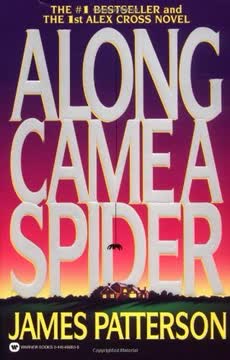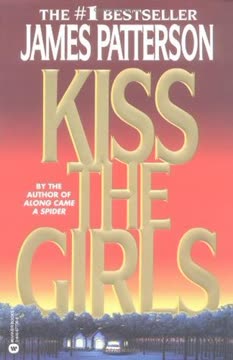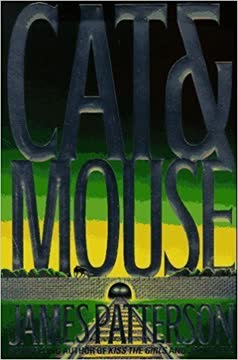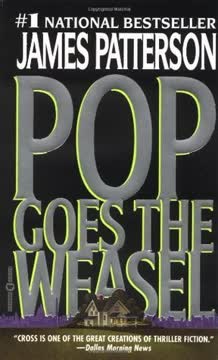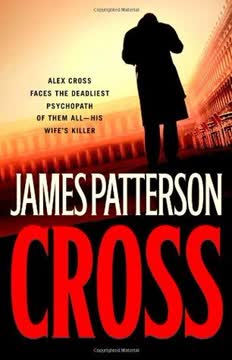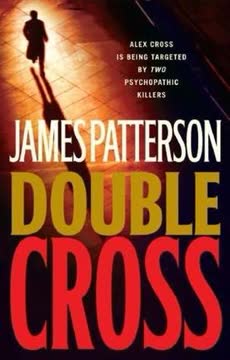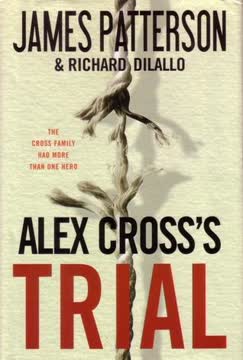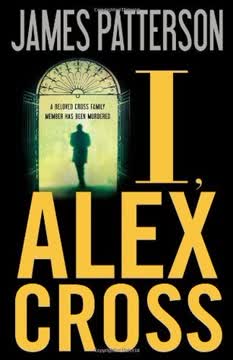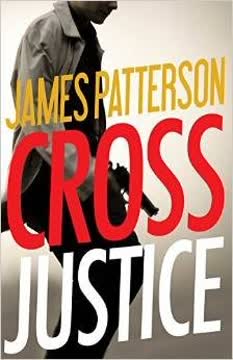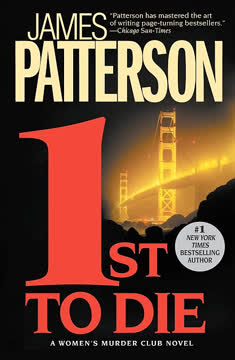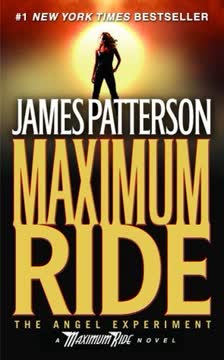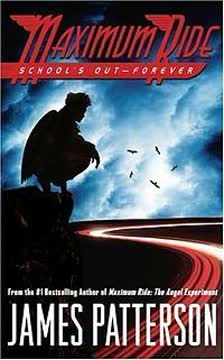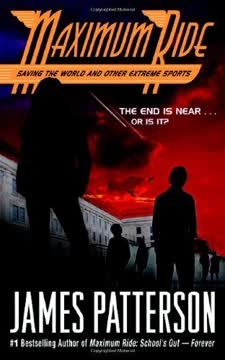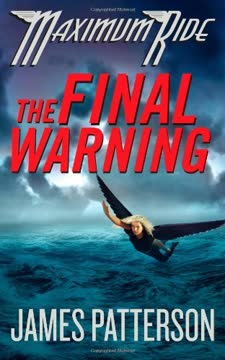Plot Summary
The Mysterious Emails
Entertainment columnist Arnold Griner receives disturbing emails from a person named Mary Smith, who claims responsibility for a series of murders targeting Hollywood's elite. The emails detail the gruesome killings of high-profile women, leaving the police and FBI, including detective Alex Cross, scrambling to catch the killer. The emails are both a taunt and a confession, drawing Cross into a complex investigation that blurs the lines between reality and fiction.
A Mother's Illusion
Mary Wagner, a seemingly ordinary hotel maid, becomes the prime suspect in the Hollywood murders. Her life is a facade, hiding a past filled with tragedy and mental illness. As Cross delves deeper, he discovers that Mary is haunted by the memory of her children, whom she believes are still alive. Her delusions are a coping mechanism for the horrific crime she committed years ago, when she killed her own children in a psychotic break.
The Hollywood Stalker
The investigation reveals that the murders are not random but part of a calculated plan by someone with intimate knowledge of Hollywood's inner workings. The killer, dubbed the Hollywood Stalker, targets women who embody the perfect mother image, exposing their hidden flaws. The case takes a turn when Cross uncovers a connection between the victims and a failed Hollywood producer, Michael Bell, who has his own vendetta against the industry.
A Tangled Web
Cross uncovers a web of deceit involving Michael Bell, who manipulated Mary Wagner into committing the murders. Bell's motive is revenge against those who wronged him in Hollywood, using Mary as a pawn in his deadly game. The investigation becomes a race against time as Cross and his team work to prevent another murder, piecing together clues that lead them to Bell's involvement and his twisted plan to frame Mary.
The Real Mary Smith
Cross travels to Vermont to learn about Mary Wagner's past, discovering her true identity as Mary Constantine, a woman who killed her children decades ago. Her mental illness and manipulation by Bell are revealed, painting a tragic picture of a woman caught in a cycle of violence and delusion. The investigation highlights the complexities of mental health and the impact of trauma, as Cross seeks justice for the victims and redemption for Mary.
The Final Confrontation
The investigation culminates in a tense confrontation between Cross and Bell in the Vermont woods. Bell, desperate and unhinged, attempts to kill Cross, but the detective manages to turn the tables, ending Bell's reign of terror. The resolution brings closure to the case, but not without leaving scars on those involved. Cross reflects on the nature of justice and the cost of his pursuit, as he returns home to his family.
Homecoming
After the case, Cross returns to Washington, D.C., to reunite with his family. The experience has changed him, deepening his appreciation for his loved ones and the importance of being present in their lives. The story ends on a hopeful note, as Cross embraces the future with a renewed sense of purpose and commitment to his family, leaving behind the darkness of the Hollywood murders.
Characters
Alex Cross
Alex Cross is a dedicated FBI agent and psychologist, known for his ability to solve complex cases. He is deeply committed to his family, often struggling to balance his demanding job with his responsibilities as a father. Throughout the investigation, Cross is driven by a desire for justice and a need to protect those he loves, even as he confronts his own vulnerabilities and the impact of his work on his personal life.
Mary Wagner/Constantine
Mary Wagner, also known as Mary Constantine, is a woman haunted by the murder of her own children. Her mental illness and delusions make her both a victim and a suspect in the Hollywood murders. Manipulated by Michael Bell, she becomes an unwitting pawn in his deadly scheme. Her story highlights the complexities of mental health and the devastating effects of trauma.
Michael Bell
Michael Bell is a failed Hollywood producer with a vendetta against the industry. He orchestrates the murders to settle scores with those who wronged him, using Mary Wagner as his tool. Bell's cunning and ruthlessness make him a formidable adversary, but his arrogance ultimately leads to his downfall. His character serves as a cautionary tale about the destructive power of revenge.
Arnold Griner
Arnold Griner is an entertainment columnist who becomes embroiled in the murder investigation after receiving emails from Mary Smith. His curiosity and ambition drive him to pursue the story, but he ultimately becomes one of the killer's victims. Griner's character underscores the dangers of getting too close to the darkness he seeks to expose.
Jeanne Galletta
Jeanne Galletta is an LAPD detective working alongside Cross to solve the Hollywood murders. She is tenacious and resourceful, but the pressure of the high-profile case takes a toll on her. Galletta's partnership with Cross highlights the challenges of law enforcement and the importance of collaboration in the pursuit of justice.
Plot Devices
The Emails
The emails from Mary Smith serve as both a confession and a taunt, drawing Cross and the authorities into a complex investigation. They provide insight into the killer's mind and motives, while also serving as a narrative device to advance the plot and create tension.
Dual Identity
Mary Wagner's dual identity as Mary Constantine is a key plot device, revealing the impact of trauma and mental illness on her actions. Her delusions and manipulation by Bell drive the narrative, highlighting the blurred lines between victim and perpetrator.
The Hollywood Setting
The Hollywood setting provides a backdrop of glamour and intrigue, contrasting with the dark motives and actions of the characters. It serves as a commentary on the facade of perfection and the hidden flaws of those in the public eye, adding depth to the story's themes.
Analysis
"Mary, Mary" explores the complexities of mental illness, trauma, and the impact of past actions on the present. Through the character of Mary Wagner, the story delves into the psychological effects of guilt and delusion, highlighting the challenges of understanding and treating mental health issues. The narrative also examines the destructive power of revenge, as seen in Michael Bell's manipulation and ultimate downfall. The Hollywood setting serves as a commentary on the facade of perfection and the hidden flaws of those in the public eye, adding depth to the story's themes. Ultimately, the book underscores the importance of justice, redemption, and the healing power of family, as Alex Cross navigates the darkness of the case and emerges with a renewed sense of purpose and commitment to his loved ones.
Last updated:
FAQ
Synopsis & Basic Details
What is Mary, Mary about?
- A Celebrity Killer's Taunts: The novel plunges FBI Agent Alex Cross into a high-stakes investigation in Los Angeles, where a killer, self-dubbed "Mary Smith," targets high-profile Hollywood mothers. Mary Smith sends chilling, detailed emails to an entertainment columnist, Arnold Griner, claiming responsibility for each murder and escalating the terror.
- Cross's Personal Turmoil: As Cross races against time to identify and apprehend the elusive killer, he simultaneously grapples with profound personal challenges, including a contentious custody battle for his youngest son, Alex Jr., and the strain on his relationships with his family and girlfriend, Jamilla.
- Unmasking a Complex Plot: The investigation initially points to Mary Wagner, a seemingly ordinary hotel maid with a tragic past and severe mental illness. However, Cross soon uncovers a deeper, more manipulative plot orchestrated by a vengeful Hollywood insider, revealing a story far more intricate than a simple serial killer case.
Why should I read Mary, Mary?
- Intricate Psychological Thriller: Readers seeking a deep dive into the minds of both a cunning villain and a psychologically complex protagonist will find "Mary, Mary" compelling. The narrative explores themes of identity, revenge, and the devastating effects of mental illness, offering more than just a whodunit.
- Alex Cross's Vulnerability: This installment offers a raw, intimate look at Alex Cross's personal life, showcasing his struggles as a father and partner amidst the brutal demands of his job. It humanizes the iconic detective, making his triumphs and failures deeply resonant.
- Sharp Social Commentary: The book subtly critiques Hollywood's superficiality, media sensationalism, and the public's obsession with celebrity, using the murder spree as a lens to examine societal values and the pressures faced by public figures.
What is the background of Mary, Mary?
- Hollywood's Dark Underbelly: The story is set against the glamorous yet cutthroat backdrop of Los Angeles, specifically targeting "perfect mothers" in the film industry. This highlights the intense scrutiny and public image pressures faced by celebrities, contrasting their polished exteriors with the killer's brutal reality.
- Exploration of Mental Health: A significant background element is the exploration of severe mental illness, particularly dissociative states and repressed trauma, through the character of Mary Wagner/Constantine. Her past in a Vermont state hospital and the tragic murder of her own children decades prior form a crucial, heartbreaking foundation for the present-day crimes.
- Media's Role in Crime: The narrative heavily features the role of media, from the killer's deliberate use of an entertainment columnist to publicize her acts, to the sensationalism surrounding the "Hollywood Stalker" moniker. This reflects a contemporary concern with how crime is consumed and amplified by news cycles.
What are the most memorable quotes in Mary, Mary?
- "I'm Mary.": This chilling, concise confession from the Storyteller to Tracey Willett in Chapter 56, "I planned those murders, Tracey. I'm Mary," is a pivotal moment, revealing the true killer's identity and their twisted pride in their creation. It encapsulates the killer's self-identification with the persona they created.
- "Don't make them orphans, Alex.": Nana Mama's poignant plea to Alex in Chapter 119, urging him to prioritize his children over his all-consuming work, serves as a powerful thematic anchor. It underscores Cross's central conflict and the profound emotional cost of his dedication to justice.
- "The Invisible Woman, that's me. That's a lot of us, actually.": From Mary Smith's email to Arnold Griner in Chapter 73, this line profoundly articulates the killer's core motivation: a deep-seated feeling of invisibility and resentment towards those who are seen and celebrated. It's a cry for recognition masked by violence.
What writing style, narrative choices, and literary techniques does James Patterson use?
- Short, Punchy Chapters: Patterson employs his signature style of extremely short chapters, often ending with cliffhangers or provocative statements. This creates a relentless, fast-paced reading experience, driving the plot forward with urgency and maintaining high suspense.
- Multiple, Shifting Perspectives: The narrative frequently shifts between Alex Cross's first-person perspective, third-person accounts of the investigation, and the chilling first-person "Storyteller" chapters. This technique provides a multifaceted view of the events, allowing readers into the minds of both the detective and the killer, enhancing dramatic irony and suspense.
- Direct and Unadorned Prose: Patterson's writing is characterized by clear, straightforward language, focusing on action and dialogue rather than elaborate descriptions. This accessible style ensures a broad appeal, making complex plots easy to follow while still delivering emotional impact through character voice and internal monologue.
Hidden Details & Subtle Connections
What are some minor details that add significant meaning?
- Mary Wagner's Journal: The detail of Mary Wagner carrying a clothbound journal and writing in it (Chapter 89) is a subtle nod to the "Mary Smith" emails, suggesting her deep-seated need for self-expression and control over her narrative, even if delusional. It foreshadows the discovery of Mary Constantine's extensive journals in Vermont, revealing a lifelong habit of documenting her inner world.
- The Walther PPK's Age: The revelation that the murder weapon, a Walther PPK, is "at least twenty years" old (Chapter 48) is a crucial, understated clue. This detail subtly links the present-day "Mary Smith" murders to Mary Constantine's past crime in 1983, hinting at a long-dormant connection and the killer's deep-rooted history.
- "Somebodies and Nobodies" Motif: Mary Constantine's journal entries from the asylum (Chapter 112) explicitly use the terms "somebodies" and "nobodies," mirroring the language in the "Mary Smith" emails. This seemingly minor detail confirms the psychological continuity between Mary Constantine's past trauma and the "Mary Smith" persona, highlighting a core theme of social resentment and perceived invisibility.
What are some subtle foreshadowing and callbacks?
- Cross's Custody Battle Parallels: Early in the book, Alex Cross's intense custody battle for Alex Jr. (Chapters 20, 30-36) subtly foreshadows the killer's obsession with "perfect mothers" and children. This personal struggle makes Cross uniquely empathetic to the victims' families and the killer's warped focus on motherhood, creating a deeper emotional connection to the case.
- The "Invisible Woman": Mary Smith's email in Chapter 73 states, "The Invisible Woman, that's me. That's a lot of us, actually." This phrase is a direct callback to Mary Constantine's journal entries from the asylum (Chapter 112), where she writes, "Am I invisible to everyone else? I truly wonder-am I invisible?" This thematic echo powerfully links the killer's present actions to a long-standing, profound sense of unworthiness and neglect.
- Truscott's Persistent Presence: James Truscott, the investigative journalist, appears repeatedly at inconvenient and inappropriate moments (Chapters 6, 12, 36, 70, 97). His relentless pursuit of Cross and the story, culminating in his murder by Bell (Chapter 117), foreshadows the dangers of media sensationalism and the blurring lines between reporting and intrusion, ultimately making him a victim of the very story he sought to exploit.
What are some unexpected character connections?
- Michael Bell and Mary Constantine's Shared History: The most unexpected connection is Michael Bell's visits to Mary Constantine at the Vermont State Hospital (Chapter 115). This reveals that Bell didn't just manipulate a random mentally ill woman; he specifically sought out and cultivated a relationship with Mary, exploiting her past trauma and mental state for his elaborate revenge plot.
- Arnold Griner as a Target, Not Just a Messenger: While Griner initially appears to be a random recipient of the "Mary Smith" emails, it's later revealed that Michael Bell specifically targeted him due to Griner's past negative reviews of Bell's films, calling him "Michael Bomb" (Chapter 116). This transforms Griner from a mere plot device into a victim with a direct, albeit professional, connection to the killer's motive.
- Jeanne Galletta's Personal Investment: Detective Galletta's initial professional distance evolves into a more personal investment, particularly after she is unfairly removed from the case (Chapter 69). Her continued, albeit unofficial, assistance to Cross and her emotional reaction to Alicia Pitt's death (Chapter 69) reveal a deeper connection to the pursuit of justice beyond departmental politics, highlighting her integrity and resilience.
Who are the most significant supporting characters?
- Nana Mama: Alex Cross's grandmother, Nana Mama, serves as the emotional anchor and moral compass for the Cross family. Her unwavering support, practical wisdom, and fierce protectiveness (Chapters 20, 41, 119) provide stability for Alex and his children, reminding him of his core values amidst the chaos of his work and personal life.
- Agent Karl Page: Initially an eager but green FBI agent, Karl Page evolves into a competent and insightful partner for Alex Cross. His quick mind, dedication, and ability to connect subtle clues (Chapters 48, 85, 116) make him invaluable to the investigation, demonstrating the importance of mentorship and fresh perspectives in law enforcement.
- Detective Jeanne Galletta: The lead LAPD detective, Jeanne Galletta, is a tenacious and capable investigator who forms a complex professional and personal bond with Cross. Her struggles with departmental politics, media pressure, and the emotional toll of the case (Chapters 50, 69) mirror Cross's own challenges, highlighting the shared burdens of their profession.
Psychological, Emotional, & Relational Analysis
What are some unspoken motivations of the characters?
- Alex Cross's Guilt and Avoidance: Cross's relentless pursuit of serial killers, particularly in this case, is subtly driven by unresolved guilt over his wife Maria's unsolved murder and a subconscious desire to prevent other families from suffering similar losses (Chapter 29). This unspoken motivation often leads him to prioritize work over family, creating internal conflict and straining his personal relationships.
- Michael Bell's Narcissistic Wounding: Beyond simple revenge, Michael Bell's elaborate murder plot is fueled by a profound narcissistic injury from his perceived failures in Hollywood and his wife Marti's impending divorce (Chapter 116). His need to control the narrative and "write" the story of his victims (Chapter 27) stems from a desperate attempt to reclaim power and significance in a world he felt had rejected him.
- Mary Wagner's Search for Identity: Mary Wagner's (Mary Constantine's) deep-seated mental illness and dissociative state are rooted in her past trauma, but her current actions are also an unspoken quest for a coherent identity. Her obsession with her imaginary children and her willingness to confess to crimes she didn't commit (Chapter 95) reflect a desperate need for purpose and connection, even if it means embracing a false reality.
What psychological complexities do the characters exhibit?
- Mary Wagner's Dissociative Identity: Mary Wagner exhibits profound psychological complexities, primarily a dissociative state where she has repressed the memory of murdering her own children (Chapter 106). She lives in a delusional reality where her children are alive, and her "Mary Smith" persona is a fragmented expression of her underlying trauma, anger, and a desperate need for recognition.
- Alex Cross's Workaholic Tendencies: Cross struggles with a deep-seated workaholism, often sacrificing personal time and family commitments for his cases (Chapter 20, 29, 103). This is a coping mechanism for his past traumas, but it creates a cycle of emotional distance and regret, making him a complex figure who is both dedicated and flawed.
- Michael Bell's Psychopathic Grandiosity: Michael Bell displays classic psychopathic traits, including a lack of empathy, manipulative behavior, and a grandiose sense of self (Chapter 27, 117). His "Storyteller" persona highlights his need for control and his view of human lives as mere plot points in his personal narrative, revealing a chilling detachment from the consequences of his actions.
What are the major emotional turning points?
- Alex Cross's Custody Loss: The court ruling granting Christine sole physical custody of Alex Jr. (Chapter 36) is a devastating emotional turning point for Cross. It forces him to confront the personal cost of his demanding career and the potential for losing his children, intensifying his resolve to re-evaluate his priorities and fight for his family.
- Mary Wagner's Breakdown During Interrogation: Mary Wagner's violent outburst and attempt to grab Cross's gun (Chapter 96-97) when confronted about her children's non-existence marks a critical emotional breakdown. This moment reveals the depth of her delusion and the raw pain beneath her calm exterior, shifting Cross's perception of her from suspect to deeply disturbed victim.
- Christine's Decision to Return Alex Jr.: Christine's unexpected decision to move back to Virginia and bring Alex Jr. home to D.C. (Chapter 121) is a profound emotional turning point for Cross. It offers him a chance at reconciliation and a renewed sense of hope for his family's future, providing a much-needed resolution to his personal struggles.
How do relationship dynamics evolve?
- Cross and Jamilla's Dissolution: The relationship between Alex Cross and Jamilla Hughes, initially a source of comfort and intimacy, gradually deteriorates due to Cross's work commitments and inability to fully commit (Chapter 53). Jamilla's confession of seeing someone else marks the end of their romantic relationship, highlighting Cross's struggle with balancing love and duty.
- Cross and Christine's Complex Co-Parenting: The dynamic between Alex Cross and Christine, Alex Jr.'s mother, evolves from a tense custody battle to a fragile understanding (Chapters 30-36, 54-55). Despite their past and ongoing disagreements, Christine's eventual decision to return Alex Jr. to D.C. (Chapter 121) suggests a mutual, albeit difficult, recognition of what is best for their son, moving towards a more cooperative co-parenting relationship.
- Cross and Agent Page's Mentorship: The professional relationship between Alex Cross and the young Agent Karl Page develops from initial formality to a respectful mentorship (Chapters 11, 48, 72). Page's ambition and sharp insights earn Cross's trust and guidance, demonstrating Cross's ability to inspire and develop talent, and Page's growth as an agent.
Interpretation & Debate
Which parts of the story remain ambiguous or open-ended?
- The Full Extent of Mary Wagner's Awareness: While Mary Wagner (Constantine) is diagnosed with mental illness and represses the memory of killing her children, the exact degree of her awareness or subconscious complicity in Michael Bell's scheme remains somewhat ambiguous. Her journal entries show a fragmented self, leaving readers to ponder if any part of her understood she was being used, or if she was entirely a pawn.
- Christine's True Motivations for Custody: Christine's motivations for initially seeking sole custody of Alex Jr. and then abruptly returning him to Cross (Chapter 30, 121) are open to interpretation. Was her initial move purely vindictive, or a misguided attempt to protect Alex Jr. from Cross's dangerous life? Her later change of heart could be seen as genuine growth or another unpredictable "mood swing," leaving her character's long-term stability debatable.
- The "Storyteller" Persona's Genesis: While Michael Bell is revealed as the "Storyteller," the precise origin of this persona and his deep-seated psychopathy is not fully explored. Readers might debate whether his failures in Hollywood merely triggered existing tendencies or fundamentally warped his personality, leaving the depth of his psychological breakdown open to further interpretation.
What are some debatable, controversial scenes or moments in Mary, Mary?
- The Portrayal of Mental Illness: The depiction of Mary Wagner/Constantine's severe mental illness, particularly her dissociative state and the ease with which Michael Bell manipulates her, could be seen as controversial. Some might argue it sensationalizes mental illness or simplifies its complexities, using it as a convenient plot device rather than a nuanced exploration.
- Cross's Actions in the Custody Battle: Alex Cross's decision to use his children's bond with Alex Jr. as a legal argument in court (Chapter 33) and his lawyer's aggressive stance against Christine's parenting are debatable. While understandable from his perspective, it raises questions about the ethics of using children as leverage in legal disputes and the emotional toll such battles take on all involved.
- The Media's Role and Truscott's Fate: The novel's portrayal of the media, particularly James Truscott's intrusive journalism and his eventual murder (Chapter 117), can be seen as controversial. It critiques sensationalism but also depicts a journalist's death as a consequence of his actions, potentially blurring the lines between legitimate reporting and reckless endangerment, and inviting debate on media ethics.
Mary, Mary Ending Explained: How It Ends & What It Means
- The True Killer's Demise: The story culminates in a violent confrontation in the Vermont woods where Alex Cross kills Michael Bell, the true "Mary Smith" mastermind, in self-defense (Chapter 118). Bell's death ends his reign of terror and his twisted narrative, bringing a definitive close to the murder spree. This signifies that justice, though brutal, is ultimately served, and the manipulative "Storyteller" can no longer control the plot.
- Mary Wagner's Tragic Fate: Mary Wagner, the mentally ill woman framed by Bell, tragically hangs herself in her cell after confessing to murders she didn't commit (Chapter 121). Her death underscores the devastating consequences of mental illness and manipulation, highlighting that even with the truth revealed, some victims cannot escape their internal torment. It serves as a poignant commentary on the fragility of the human mind and the limitations of the justice system in addressing profound psychological suffering.
- Alex Cross's Homecoming and Renewed Commitment: The novel concludes with Alex Cross returning home to Washington D.C., where Christine unexpectedly brings Alex Jr. back to live with him permanently (Chapter 121). This "homecoming" signifies Cross's personal redemption and a renewed commitment to his family, promising to be present and keep his promises. The ending emphasizes the healing power of family and the importance of balancing professional duty with personal life, suggesting a hopeful, albeit hard-won, future for the detective.
Review Summary
Mary, Mary is the 11th book in James Patterson's Alex Cross series. Reviews are mixed, with some praising the suspenseful plot and unexpected twists, while others criticize the predictable formula and lack of character development. Many readers enjoy the fast-paced writing style and short chapters, finding it easy to read. The story follows Alex Cross as he investigates a serial killer targeting Hollywood celebrities while dealing with personal issues. Some readers find the book forgettable, while others consider it a return to form for the series.
Alex Cross Series Series
Download PDF
Download EPUB
.epub digital book format is ideal for reading ebooks on phones, tablets, and e-readers.

